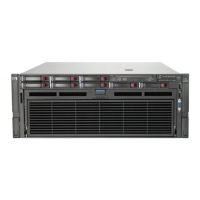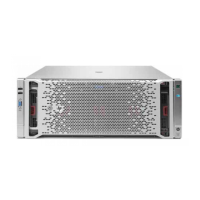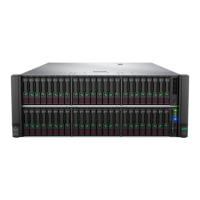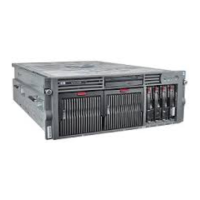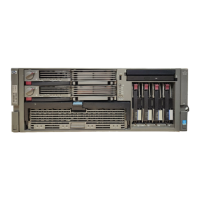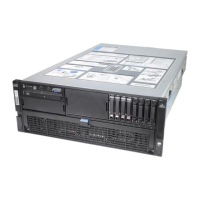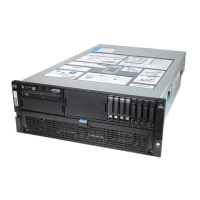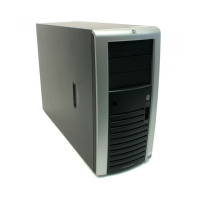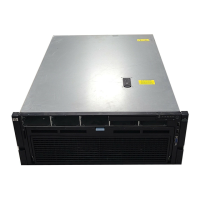Removal and replacement procedures 43
4.
Remove the BBWC battery pack ("Removing the BBWC battery pack" on page 42).
5. Disconnect the cable from the cache module only if the battery pack is not being used to recover
data from the server or transfer data to another server.
CAUTION: Do not detach the cable that connects the battery pack to the cache module. Detaching the
cable causes any unsaved data in the cache module to be lost.
To replace the component, reverse the removal procedure.
IMPORTANT: The battery pack might have a low charge when installed. In this case, a POST error
message is displayed when the server is powered up, indicating that the battery pack is temporarily
disabled. No action is necessary on your part. The internal circuitry automatically recharges the batteries
and enables the battery pack. This process might take up to four hours. During this time, the cache module
functions properly, but without the performance advantage of the battery pack.
NOTE: The data protection and the time limit also apply if a power outage occurs. When power is restored
to the system, an initialization process writes the preserved data to the hard drives.
Removing the BBWC cache module
1. Power down the server (on page 27).
2. Extend or remove the server from the rack ("Extending the server from the rack" on page 26,
"Remove the server from the rack" on page 27).
3. Remove the access panel ("Removing the access panel" on page 28).
CAUTION: To prevent a server malfunction or damage to the equipment, do not add or remove the battery
pack while an array capacity expansion, RAID level migration, or stripe size migration is in progress.
CAUTION: After the server is powered down, wait 15 seconds and then check the amber LED before
unplugging the cable from the cache module. If the amber LED blinks after 15 seconds, do not remove the
cable from the cache module. The cache module is backing up data, and data is lost if the cable is
detached.

